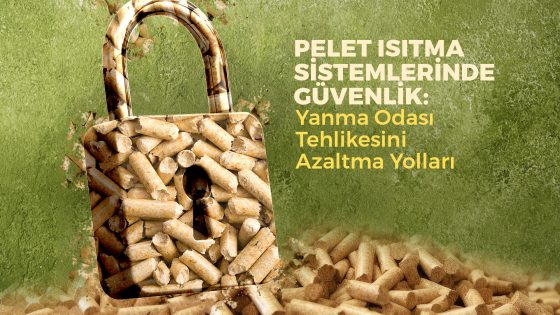
Safety in Pellet Heating Systems:
Ways to Reduce Combustion Chamber Hazards
Pellet-fueled heating systems must be designed with care not only to ensure energy efficiency but also to prioritize safety. One of the most significant safety concerns these systems face is the transportation of pellets from the combustion chamber and the risk of backburn. However, there are many effective ways to address these issues.
Temperature-Controlled Top-Fed Burners: As a primary safety measure, temperature-controlled lid top-fed burners can be used. This design prevents the flame from reaching the pellets before they fall into the combustion chamber through temperature controls. This significantly reduces the risk of backburn.
Cell Lock Mechanisms for Horizontal and Bottom-Fed Burners: Another safety measure used in horizontal and bottom-fed burners is the wheel-type cell lock mechanism. This mechanism prevents the flame from reaching the pellets by blocking the wheel that carries the pellets. This greatly reduces the risk of backburn.
Falling Shaft System: Another preventive mechanism that separates the pellet storage from the burner and transport mechanism is the falling shaft system. This system prevents the pellets from falling back, reducing the risk of fire.
Spray System: In some boilers, spray systems are used to extinguish the flame when a certain temperature is exceeded. These systems reduce the risk of fire in case of overheating.
Non-Combustible Materials for Connection Pipes: The connection pipes of the pellet storage should be made of non-combustible materials. This minimizes fire hazards and enhances safety.
In conclusion, there are a number of effective measures and mechanisms to enhance the safety of pellet heating systems. With the right design and safety measures, pellet-fueled heating systems can operate efficiently and safely. These safety precautions help protect users from fire and security issues, making these systems a safer and more environmentally friendly option.
